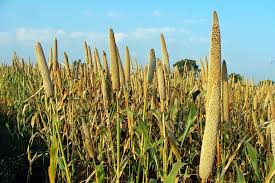The demand for consuming millets in the Indian diet is rising: ICAR-IIMR
S Srikanth
Bengaluru, NFAPost: India is no.1 producer of millets in the world with a production of 13-14 million tonnes a year and the demand for consuming millets in the Indian diet is rising, according to Vilas Tonapi, Director, ICAR-IIMR, Hyderabad.
India is no.1 producer of millets in the world with a production of 13-14 million tonnes a year and the demand for consuming millets in the Indian diet is rising, according to Vilas Tonapi, Director, ICAR-IIMR, Hyderabad.
Speaking at the Bangalore Tech Summit 2020 seminar on Friday, he said there is a need to expand the areas that come under the cultivation of millets following a rise in consumption of millets which are about 8-10 types.
He estimated that there is a need to increase the cultivation of millets by at least 40% soon.He said institutes are working on crop improvement and fortification methods and 14 states of India are on a mission to cultivate millets incrementally.
Millets are smart crops with high nutritional value for the consumers and is a climate-resilient crop. He said millets are catering to all the different tastes that exist geographically in the country. Tonapi said millets are the least energy intensive cereal which could reach all the household kitchens because of its nutritive value.
Tonapi said it had been found that millets are gluten-free with low glycemic index which constitutes good food for people suffering from diabetes. Millets can be used to prepare various types of foods and snacks that takes time to digest for people affected by diabetes.He said it has been also found that millets are anti-cancer and anti-hypertensive while also helping in preventing obesity besides reducing heart diseases.
Tonapi said the year 2023 has been declared as the international year of millets and every effort will be made to increase the area of its cultivation and its consumption.Earlier, presentations were made on the use of genetically modified and engineered crops that had changed the consumption pattern of foods and their nutritive value.ReplyReply to allForward





